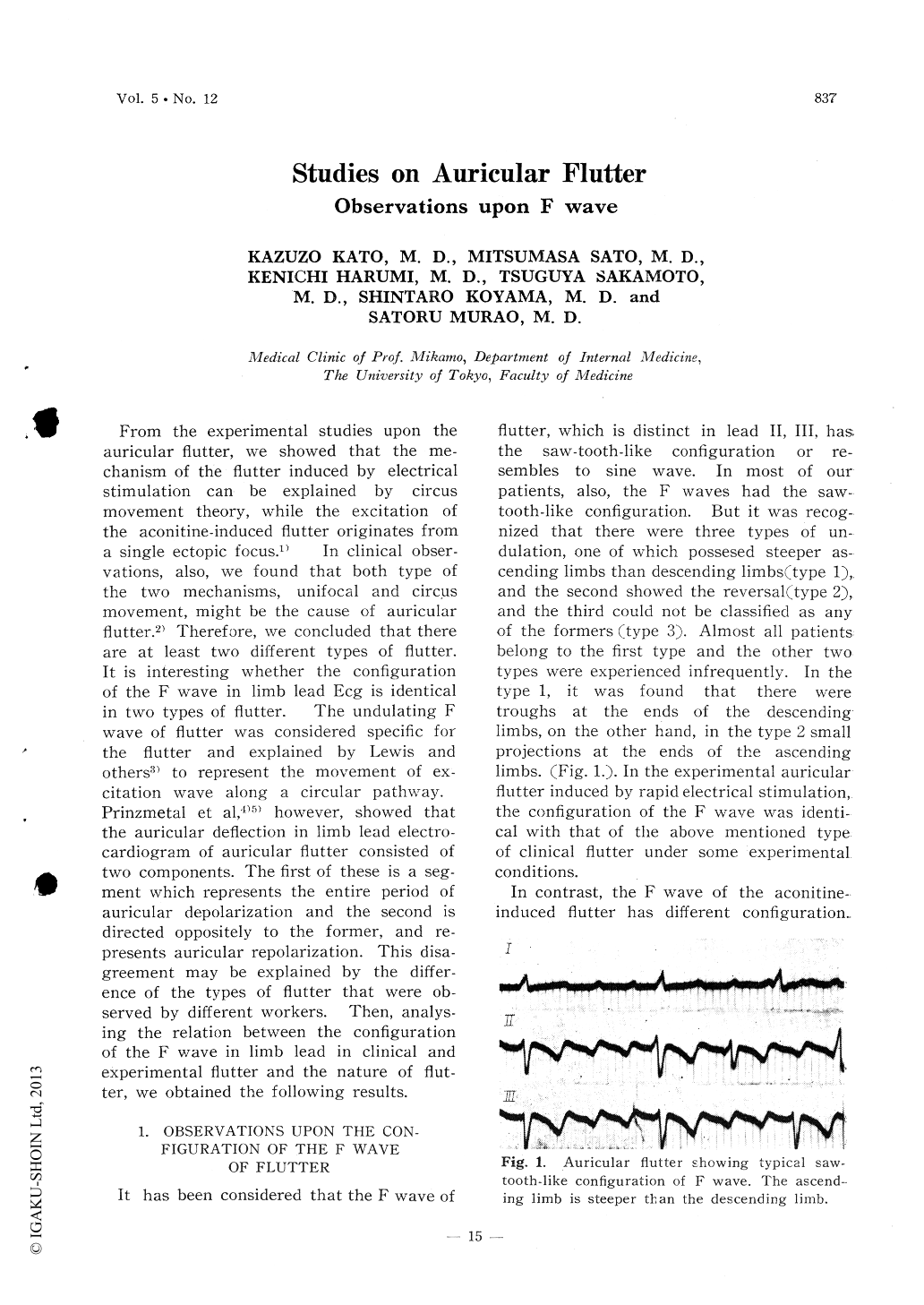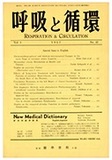- 有料閲覧
- 文献概要
- 1ページ目
Analysing the relation between the con-figuration of F wave in limb leads of clini-cal and experimental flutter and its mecha-nism, we obtained the following results.
I) In flutter due to circus movement, saw-tooth-like F wave shows two types of configuration, one of which possesses steeper ascending limb than descending limb and the other shows the reversal.
In flutter that shows steeper ascending limb of F wave, the circus-movement directs. cranio-caudal in right auricle and caudo-cranial in left. The right auricular activa-tion corresponds approximately to the porti-on of F wave between the beginning of as-cending limb and the midway of descending limb, and the left auricular activation to the trough.
In flutter that has steeper descending limb, the direction of circus movement is opposite and the left auricular activation corresponds approximately to the portion between the midway of ascending limb and that of descending limb, and the right auri-cular activation to the trough.
It is considered that the positive portion of saw-tooth like F wave represents the cranio-caudai directed activation of right or left auricle and the trough represents the caudo-cranial directed activation. The influ-ence of repolarization upon the configurati-on of F wave is not determined, but it seems to be possible to explain the form of F wave from auricular depolarization process alone.
The difference of slope of two limbs is. probably due to the difference of the size and location between right and left auricle.
2) In flutter that originates from single ectopic focus and aconitine-induced flutter, our results accord with Prinzmetal's con-cepts, but the form of F Wave differs ap-parently from that of circus movement flut-ter.

Copyright © 1957, Igaku-Shoin Ltd. All rights reserved.


